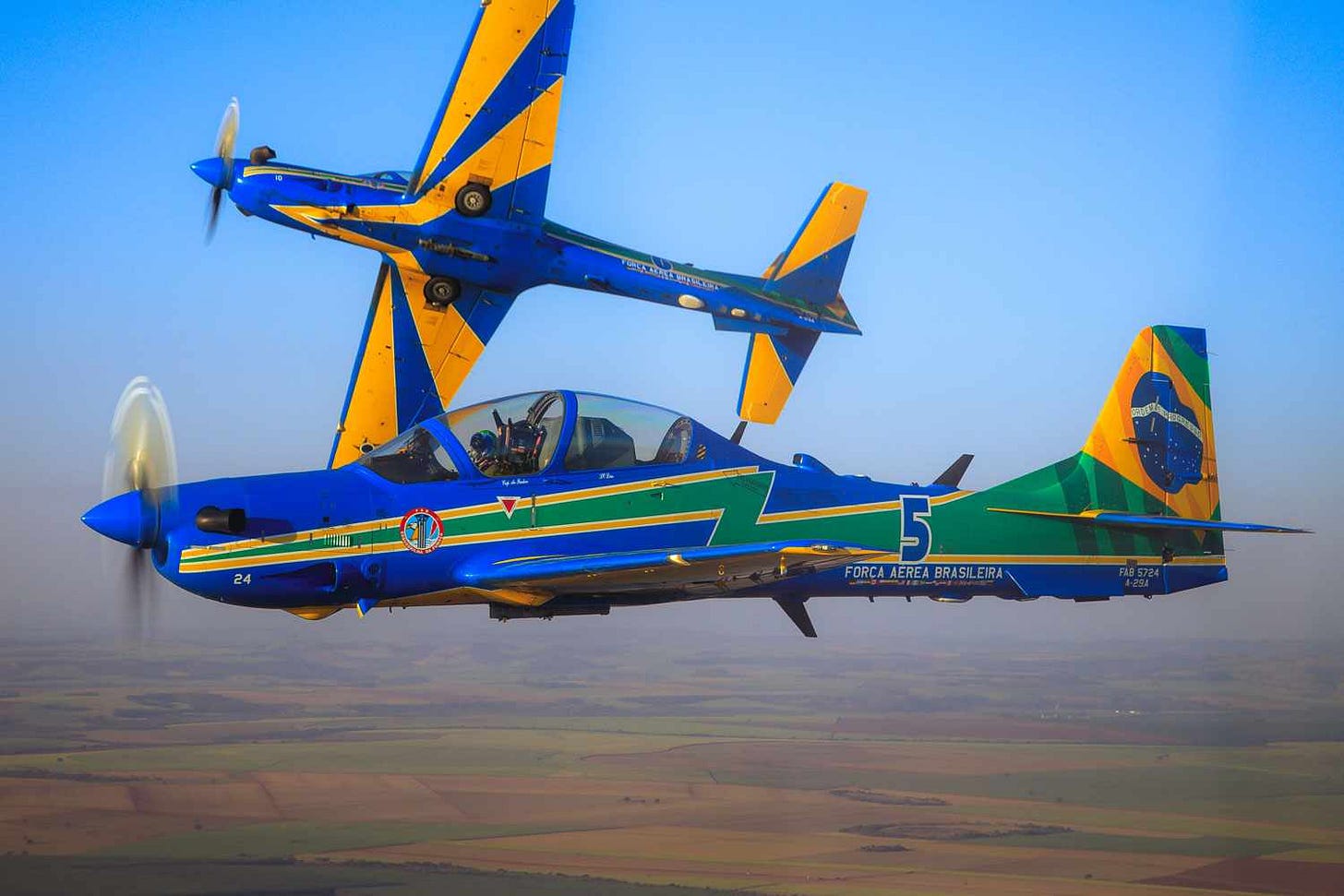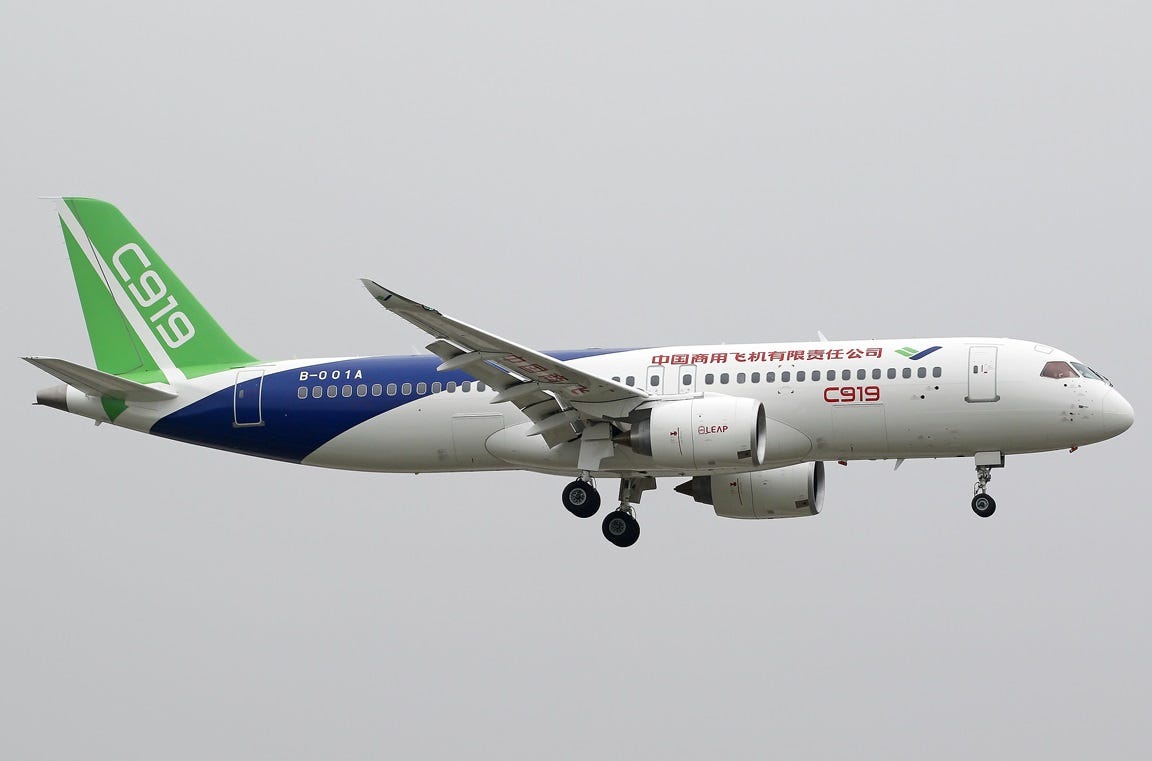Soccer, Samba and... aerospace
Amid China Boeing bans and US tariffs, Brazil's Embraer lands a geopolitical sweet spot
Ever-disappearing legroom. Squid Game-style fights for overhead bins. And those inexplicably taste-free pretzels that British Airways insists on serving. The modern-day flying experience is an exercise in maintaining one’s dignity in the face of mild disrespect. But one thing no normal passenger thinks about is what airplane type they are flying. That is because there is a nearly 100% chance it is either an American or European jet.
Boeing and Airbus simply dominate the global commercial aviation industry. The former was founded in Seattle in 1916, while the latter was established in 1969 through the consolidation of disparate European manufacturers, with the aim of countering the Americans. It has been one heck of a battle ever since.
Boeing brought aviation to the masses with its 747 jumbo jet, while Airbus developed the world’s first twin-engine wide-body airliner, the A300. Both firms have propelled the other forward through innovation, whether via common cockpit designs, more fuel-efficient engines or the use of composite materials. If you look up “duopoly” in the dictionary, you will find a picture of the commercial aerospace sector.
The reliance on just two companies is really quite remarkable, given the importance and dollar value of the sector. Think about it for a minute. Japan does not do it. India does not do it. South Korea does not do it. Russia does not really do it. China is trying but is not even nearly there yet. Building a commercial airplane is simply exceptionally hard, and doing so at scale, to the highest level of safety and to profitability is practically black magic.
Except, there is one competitor. It does not produce wide-body aircraft like the Boeing 787 or Airbus A350, which can cross continents, or even narrow-body ones, such as the Boeing 737 or Airbus A320, which might take you to the Mediterranean. Instead, it manufactures what are known as regional jets, the type of aircraft that take off from London City Airport. We are talking about Brazil’s Embraer.
In fact, Embraer dominates this corner of the market. Since its founding in 1969, the company has become the leading manufacturer of commercial jets up to 150 seats and has delivered more than 8,000 aircraft in total. Today, it transports almost 145 million passengers a year.
Like any scrappy upstart, the company faces challenges to its growth. There has been talk of taking on Boeing and Airbus by making a larger plane. But the costs of designing, developing, and manufacturing such an aircraft are staggering. We are potentially talking tens of billions of dollars. To do so would essentially risk the entire business. Still, Embraer has one big advantage: geopolitics.
Donald Trump’s tariffs on Chinese imports currently stand at an eye-watering 145%, while China has retaliated with 125% taxes on US imports. But as part of the trade war, the Chinese government has also ordered its airlines not to take any further deliveries from Boeing. The country’s top three airlines, Air China, China Eastern and China Southern had planned to take 179 Boeing planes between them in the next three years. Following the announcement, Boeing shares fell while Embraer’s rose.
Then there is Europe. The Financial Times reported yesterday that Brussels has drawn up plans to impose tariffs on Boeing civilian aircraft as part of a package of €100bn worth of annual US imports, should the European Commission fail to negotiate a deal with Washington over Trump’s tariffs on EU goods.
While all this unfolds, Brazil-China relations have warmed. Brazil’s president Luiz Inácio Lula da Silva has made repeated visits to China in recent years. China has become Brazil’s largest trading partner. It is also home to the second-largest aviation market in the world, behind only the US. And there is a sweet spot Embraer just might be able to fill.
While China’s state-owned aerospace manufacturer, Comac, offers planes with capacity for 80 or more than 160 passengers, Embraer offers a range from 110 to 150. A spokesperson for the Chinese Foreign Affairs Ministry recently praised Brazil as “an aerospace heavyweight” to which China “attaches high importance”. Embraer’s chief executive has also called a tilt to China “natural” and the company says it is open to a final assembly line in the country.
For several years, the United States and China have been on the path toward decoupling. Supply chains are being shifted to reflect this. See Apple moving its iPhone manufacturing from China to India. Trump’s decision to blow up global trade may be new and dangerous, but it is also part of an ongoing trend.
Even if this trade war can successfully be prevented from turning into a shooting one, there will not be too many winners. But Embraer might just be one of them. Something to ponder the next time you cram your knees to your chest and prepare for takeoff.






